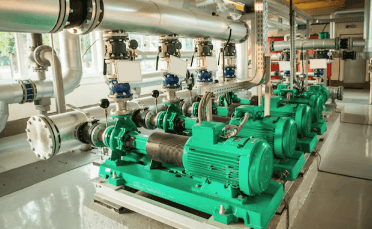Question
a.
True
b.
False
c.
May be True or False
d.
Can't say
Posted under Analytical Instrumentation
Interact with the Community - Share Your Thoughts
Uncertain About the Answer? Seek Clarification Here.
Understand the Explanation? Include it Here.
Q. Chromatography cannot be used to purify volatile substances.
Similar Questions
Explore Relevant Multiple Choice Questions (MCQs)
Q. In Column chromatography, the stationary phase is made of _________ and the mobile phase is made of _________
View solution
Q. Chromatography cannot be used to separate delicate products.
View solution
Q. In Thin layer chromatography, the stationary phase is made of _________ and the mobile phase is made of _________
View solution
Q. In which of the following type of paper, chromatography does the mobile phase move horizontally over a circular sheet of paper?
View solution
Q. Liquid chromatography can be performed in which of the following ways?
View solution
Q. Gas chromatography can be performed in which of the following ways?
View solution
Q. In Gas-liquid phase chromatography, the stationary phase is composed of _________ and the mobile phase is made of _________
View solution
Q. Which of the following types of chromatography involves the process, where the mobile phase moves through the stationary phase by the influence of gravity or capillary action?
View solution
Q. Which of the following steps takes place after injection of feed in Column chromatography?
View solution
Q. Components with a strong attraction to the support move more slowly than components with weak attraction.
View solution
Q. What happens during the ‘elution from the column’ phase in chromatography?
View solution
Q. In chromatogram, the position of peaks on the time axis can be used to determine which of the following?
View solution
Q. In chromatogram, the area under the peak can be used to determine which of the following?
View solution
Q. The stationary phase could be a viscous liquid coated over a surface of solid particles.
View solution
Q. Using Chromatogram as detector in Chromatography, a graph is obtained between ____________ and time.
View solution
Q. In older analytical methods, which of the following methods were used to allow movement of the mobile phase?
View solution
Q. How is the molar concentration of solute in stationary phase related to molar concentration of solute in the mobile phase?
View solution
Q. If the value of the distribution constant ‘k’ is one, then what could be inferred about the distribution of solute?
View solution
Q. The time taken by the analyte after sample injection to reach the detector is called _________
View solution
Q. The time required for a molecule of the mobile phase to pass through the column is called ___________
View solution
Recommended Subjects
Are you eager to expand your knowledge beyond Analytical Instrumentation? We've handpicked a range of related categories that you might find intriguing.
Click on the categories below to discover a wealth of MCQs and enrich your understanding of various subjects. Happy exploring!








